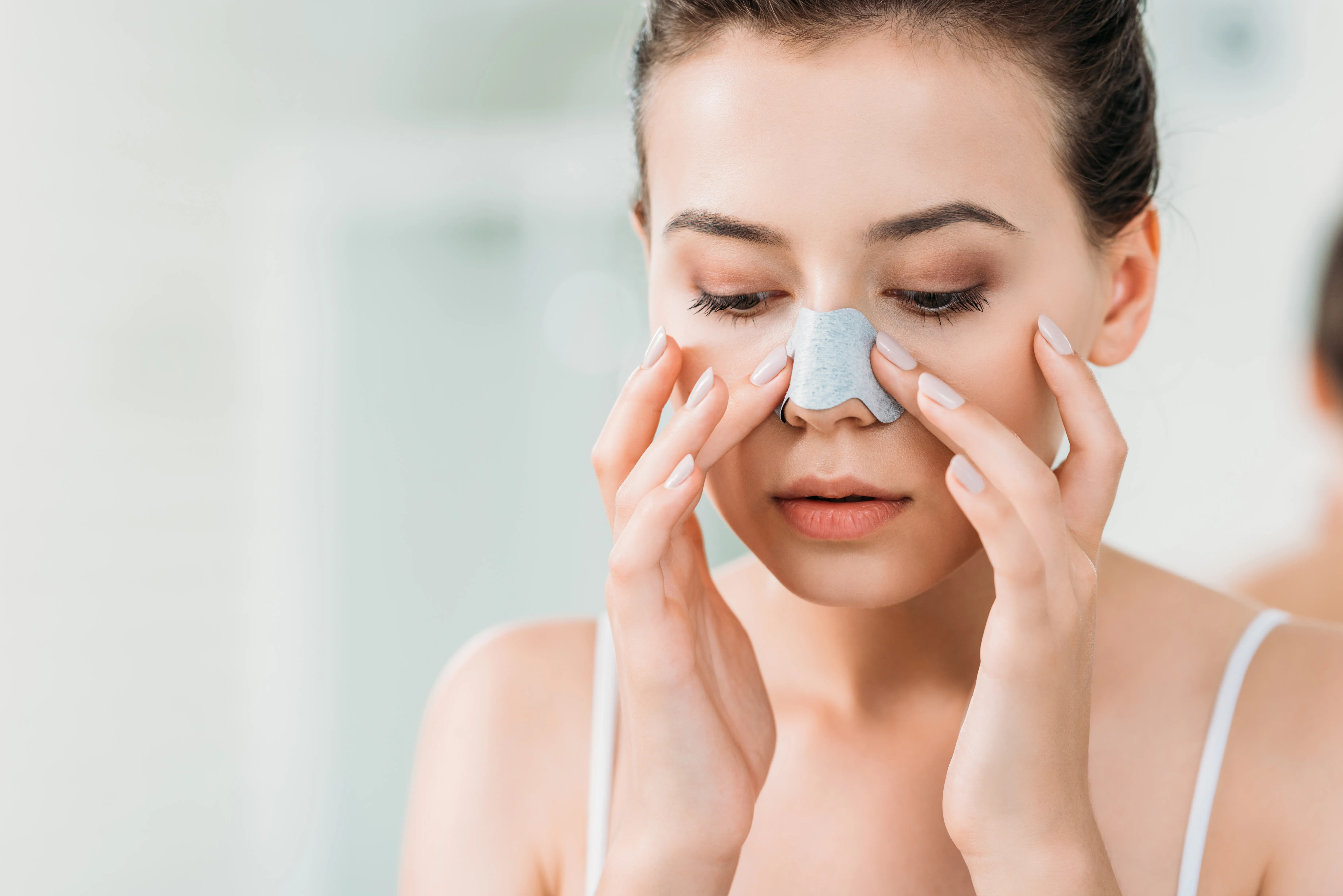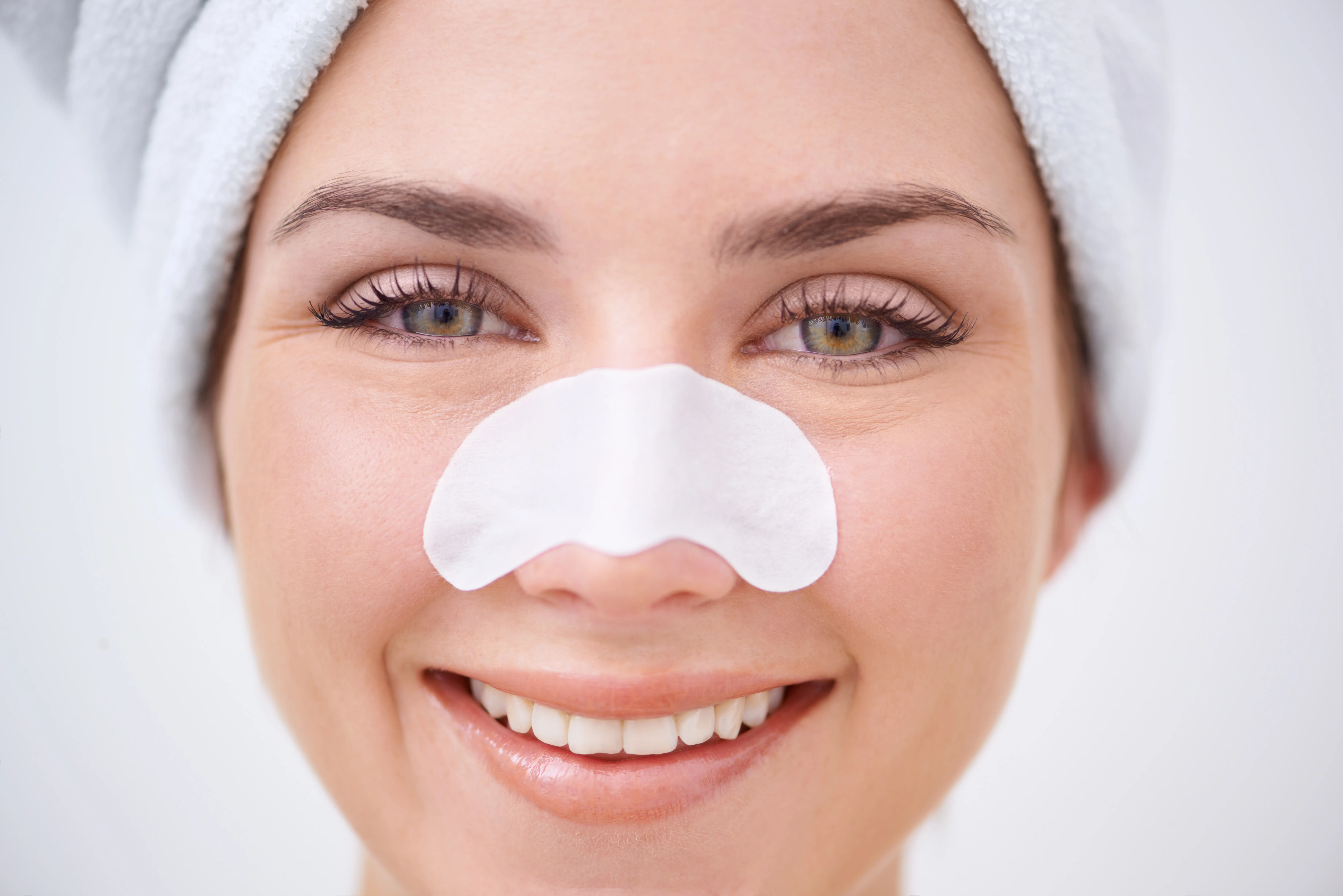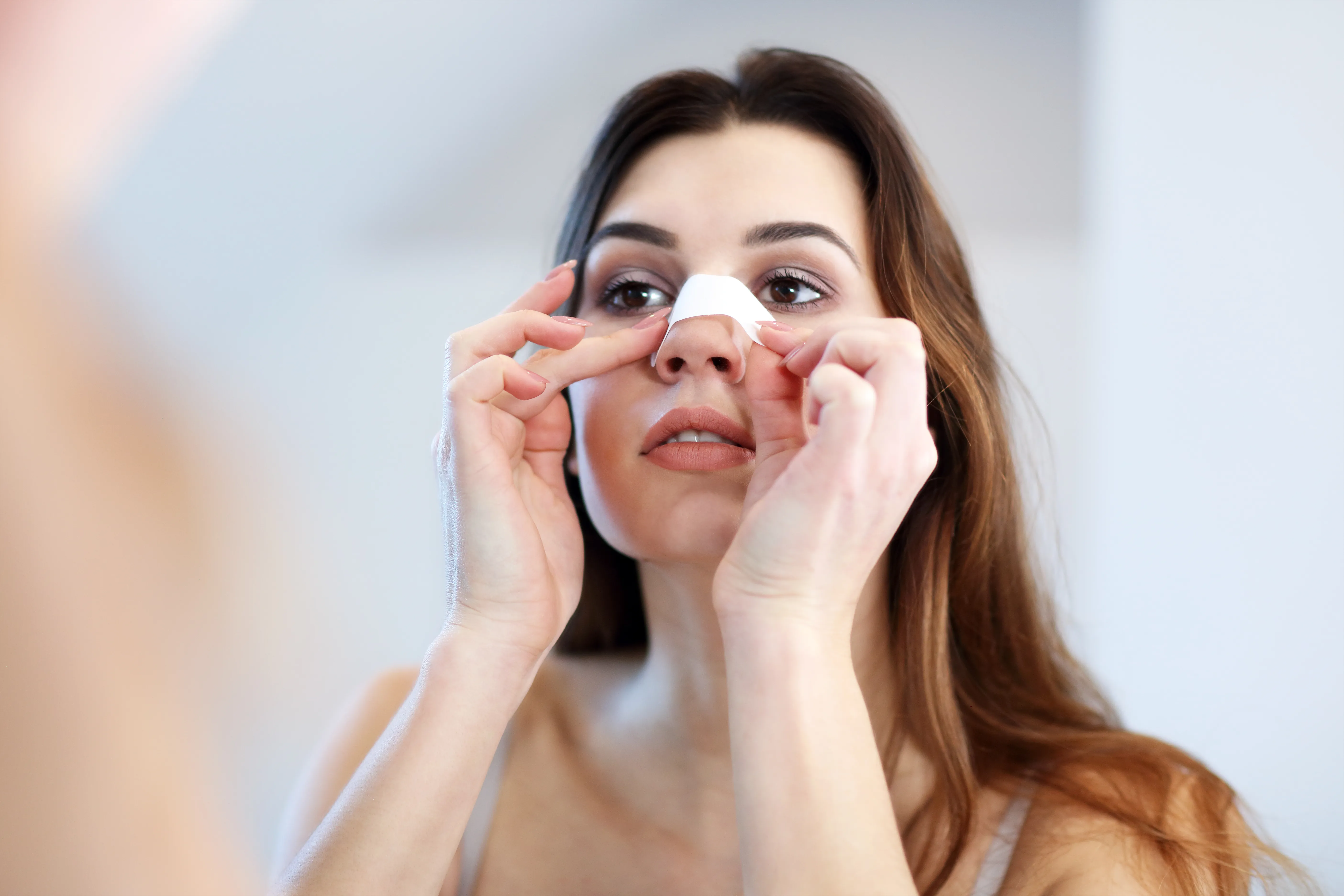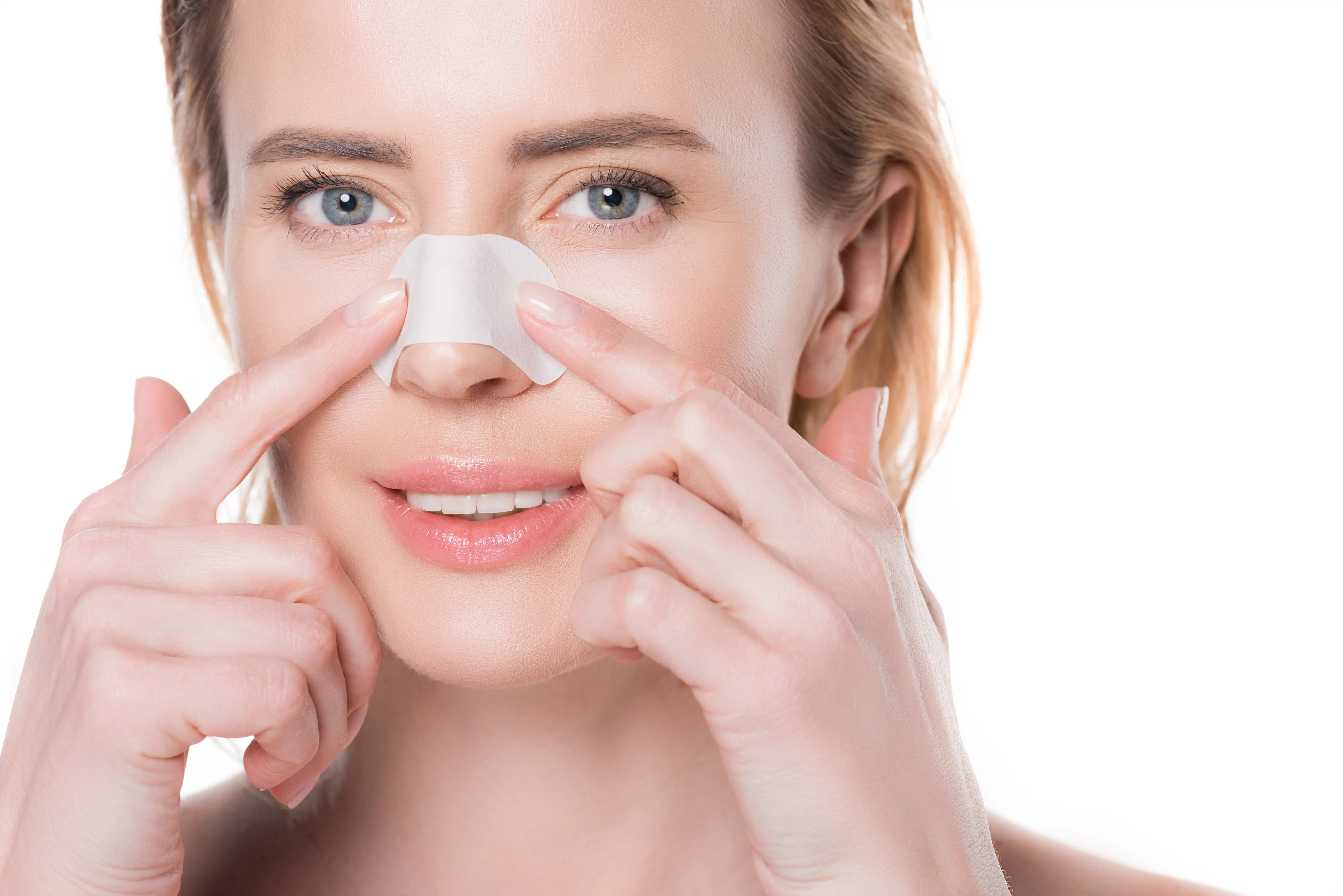Snoring is one of the most common sleep disturbances that not only affects the snorers but also their partners who share the bed with them.
Nasal strips are innovative medical aids designed to enhance airflow through the nasal passages, providing relief for individuals suffering from snoring or congestion.
Understanding how nasal strips work can help individuals make informed choices about their respiratory health and enhance their overall well-being.
In this article, we will explore the mechanics behind nasal strips and their benefits for users.
What are nasal strips?

Nasal strips are adhesive strips designed to improve airflow through the nasal passages, and they’re commonly utilized by individuals with allergies, colds, or snoring issues.
Nasal strips provide a non-medicated alternative to relieve symptoms. Available in various sizes and strengths, they are easy to apply and can be used by both adults and children.
How Do Nasal Strips Work?
They work by mechanically widening the nostrils, which alleviates nose congestion and breathing issues caused by conditions such as allergies or colds. When applied to the exterior of the nose, the flexible bands within the strip gently pull open the nostrils, thereby reducing resistance to airflow.
This mechanism not only promotes easier breathing but also can improve sleep quality by minimizing snoring.
When and Why to Use Nasal Strips
Nighttime nasal congestion can significantly disrupt sleep quality, leading to various health issues such as daytime fatigue and impaired cognitive function.
Snorers
For snorers, these adhesive strips work by mechanically widening the nostrils, which can reduce airway resistance and decrease the likelihood of snoring during sleep.
This is especially beneficial for individuals who experience nasal congestion or other respiratory issues, allowing for a more restful night's sleep for both the snorer and their partner.
Check our list for The Best Mattresses for Snoring.
Nighttime Nasal Congestion
Nasal strips serve as a practical tool for managing nighttime nasal congestion stemming from allergies, colds, sinusitis, or a deviated septum.
Their ability to facilitate breathing during sleep is invaluable for those affected by these conditions. By understanding the appropriate times to utilize nasal strips, individuals can take proactive steps towards achieving a better night’s rest and overall improved health.
- Allergies: Allergies are one of the most common triggers for nasal congestion, particularly during certain seasons when pollen counts are high or in response to pet dander and dust mites.
- Colds: Cold viruses can lead to inflammation and swelling of the nasal passages, making it difficult to breathe comfortably while sleeping.
- Sinusitis: During sinusitis episodes, when the nasal passages are often swollen and congested, using nasal strips can help to open the airways, making it easier to breathe. This is crucial for restful sleep, as uninterrupted breathing patterns contribute to a deeper and more restorative slumber.
- Deviated Septum: Individuals with a deviated septum may also find nasal strips to be a beneficial adjunct to their management plan. A deviated septum can lead to chronic nasal obstruction and difficulty breathing at night.
Runners and Other Athletes
For athletes, particularly runners, nasal strips can significantly improve oxygen intake during physical exertion. By opening up the nasal passages, they enable a greater flow of air, which is crucial during intense workouts or races.
Check our list for the Best Mattresses for Athletes.
Benefits of Nasal Strips

The benefits of nasal strips are extensive and cater to various needs. This growing popularity is due to their effectiveness as an essential tool for anyone seeking to enhance their breathing comfort and overall quality of life.
Reduces Snoring
One of the primary advantages of nasal strips is their ability to provide snoring relief. Snoring often results from restricted airflow due to nasal congestion or other obstructions in the airway.
By physically pulling the nostrils open, nasal strips enhance airflow through the passages, thereby minimizing the vibrations that cause snoring and helping individuals breathe better.
This not only improves the quality of sleep for the snorer but also provides relief for partners who may be disturbed by loud snoring sounds during the night.
Helps with Nasal Congestion Due to Colds and Allergies
Nasal strips are particularly beneficial for individuals suffering from nasal congestion due to colds and allergies. During episodes of illness or allergy flare-ups, swelling and inflammation in the nasal passages can make breathing difficult, leading to discomfort and disrupted daily activities.
Nasal strips alleviate this problem by mechanically widening the nasal passages, allowing for easier and more comfortable breathing. This can result in significant relief from symptoms such as stuffiness and pressure, enabling individuals to breathe freely and maintain their productivity even when dealing with respiratory challenges.
Aids Athletes in Breathing More Efficiently
Athletes also stand to gain from using nasal strips, as they can aid in breathing more efficiently during physical exertion. Proper oxygen intake is crucial for optimal performance in sports and physical activities.
By improving airflow and reducing resistance in the nasal passages, nasal strips help athletes maximize their oxygen intake and enhance overall endurance.
This is particularly beneficial in high-intensity sports, where even small improvements in breathing can lead to significant gains in performance. Furthermore, using nasal strips during workouts or competitions can help athletes maintain focus and stamina, ultimately contributing to better outcomes.
Non-Invasive and Drug-Free
Another notable benefit of nasal strips is that they are non-invasive and drug-free. Unlike medications that may have side effects or require prescriptions, nasal strips provide a straightforward solution without any pharmacological interventions.
This non-invasive nature makes them accessible to a wide range of individuals, including those who prefer not to rely on medication for managing their symptoms.
Limitations and Considerations
Nasal strips, commonly used to alleviate nasal congestion and improve airflow during sleep, present several limitations that warrant careful consideration.
Doesn’t Treat the Deeper Causes of Sleep Apnea
It is important to note that nasal strips do not address the underlying causes of sleep apnea. Sleep apnea is a multifaceted condition that may arise from factors such as obesity, structural abnormalities in the airway, or neuromuscular issues.
While nasal strips can enhance breathing by mechanically widening the nostrils, they do not resolve the more profound issues associated with obstructive sleep apnea.
Consequently, individuals relying solely on this form of relief may find their symptoms persist, leading to potential long-term health consequences.
Nasal Strip Effectiveness Varies Based on the Cause of Nasal Blockage
For some individuals, nasal congestion may be due to allergies, sinus infections, or anatomical features such as a deviated septum. In cases where nasal obstruction arises from these factors, nasal strips may provide temporary relief.
However, individuals whose sleep apnea is primarily due to non-nasal factors may find little to no improvement in their condition. This inconsistency emphasizes the importance of a thorough medical evaluation to determine the root cause of sleep disturbances and to formulate an appropriate treatment plan that goes beyond superficial remedies like nasal strips.
It’s Just a Temporary Relief Method
It is also crucial to note that nasal strips function as a temporary relief method rather than a permanent solution. While they may offer immediate benefits by improving airflow and reducing snoring for some users, their effects are short-lived and do not contribute to long-term management of sleep apnea or other related conditions.
Over-reliance on nasal strips without addressing the underlying issues can lead individuals to overlook more effective treatments such as continuous positive airway pressure (CPAP) therapy or lifestyle modifications.
Therefore, while nasal strips can be beneficial for occasional use, they should not replace comprehensive medical advice or treatment strategies aimed at addressing sleep apnea holistically.
Tips for Using Nasal Strips Effectively

Nasal strips can be an effective solution for enhancing airflow through the nasal passages, particularly during sleep or physical activity. To maximize their benefits, it is essential to follow some best practices for the application.
These simple yet effective tips can significantly enhance the overall experience and effectiveness of nasal strips, making them a valuable tool for better respiratory health.
Make Sure Your Skin is Clean and Dry Before Applying
One of the most critical tips is to ensure that your skin is clean and dry before applying the snoring strips, especially if you have sensitive skin. This step is crucial because any residual oils, dirt, or moisture can prevent the adhesive from bonding properly to the skin, which may lead to the strip coming off prematurely or not functioning effectively.
To prepare your skin, wash your nose area with a gentle cleanser and pat it dry thoroughly with a towel. This will provide a clean surface for optimal adhesion.
Proper Placement is Key
Proper placement of the nasal strip is also key to its effectiveness. It is important to apply the strip across the nose bridge, ensuring it sits comfortably and adheres well on either side of the nostrils.
The strip should be positioned high enough to cover the nasal passages but low enough that it does not obstruct breathing or cause discomfort. Following the manufacturer's instructions on placement can help achieve the best results.
For those who are new to using nasal strips, it may take a couple of attempts to find the perfect position, but once mastered, users will likely experience improved airflow and reduced nasal congestion.
Use Only Once, Discard After Use
It is essential to remember that nasal strips are designed for single use only. Immediately discard them after application.
Reusing them can compromise their effectiveness and hygiene, potentially leading to skin irritation or infection.
Saline Nasal Sprays
One common alternative to nasal strips is the use of saline nasal sprays. These sprays help moisturize the nasal passages, reducing dryness and irritation often associated with congestion. By thinning mucus, saline sprays can facilitate breathing and provide immediate relief.
Additionally, they are safe for regular use and do not contain any medication, making them suitable for individuals with sensitivities or those seeking natural remedies.
Internal Nasal Dilators
Another effective option is the use of nasal dilators. These devices are inserted into the nostrils to physically widen the nasal passages, allowing for improved airflow.
Available in various shapes and sizes, nasal dilators can be used during sleep or physical activities, making them a versatile alternative to nasal strips.
They are particularly beneficial for individuals who may have anatomical nasal issues, such as a deviated septum, which can contribute to chronic congestion.
Essential Oils
For those looking for a more holistic approach and alternative treatments to breathing nose strips , essential oils, such as eucalyptus or peppermint, can provide a natural remedy for congestion relief.
When diffused in the air or applied topically (with proper dilution), these oils can help open up the airways and provide a calming effect that promotes easier breathing.
Aromatherapy can be particularly beneficial when combined with other methods, such as steam inhalation or warm compresses, to create a comprehensive approach to nasal care.
FAQs
Do nasal strips work?
Yes, nasal breathing strips are designed to improve airflow through the nasal passages by physically widening the nostrils. Many users report positive outcomes, particularly for alleviating symptoms associated with nasal congestion due to allergies or colds.
Are there side effects to using nasal strips?
Some of the side effects of nose sleep strips are skin irritation or allergic reactions due to the adhesive used. Additionally, improper use or excessive reliance on nasal strips may lead to a false sense of security regarding underlying health issues.
Are nasal strips for breathing safe for children?
Nose strips for breathing are generally considered safe for children when used appropriately. However, parents must supervise their children's use of nasal strips, ensuring they are applied correctly and removed gently to avoid skin irritation.
How long can I wear a nasal strip?
Generally, you can wear snoring nasal strips for up to 12 hours at a time, depending on the manufacturer's instructions. It is advisable to remove the strip if you experience any discomfort or irritation.
What causes snoring in women?
Snoring in women can result from various factors, including anatomical, physiological, and lifestyle influences. One common cause is the relaxation of throat muscles during sleep, as well as Hormonal changes, particularly during pregnancy or menopause.
Conclusion
Nasal strips for snoring offer an effective, non-invasive solution for enhancing airflow through the nasal passages. By utilizing a flexible adhesive mechanism, they gently pull open the nostrils, thereby reducing resistance and improving breathing efficiency.
This procedure is particularly beneficial for individuals suffering from nasal congestion due to allergies, colds, or other respiratory issues. As such, nasal strips serve as a practical adjunct to traditional remedies, promoting better sleep and overall respiratory function.
Their ease of use and immediate results make nasal strips for congestion a popular choice for those looking to alleviate nasal obstruction without medication.
Dom Abraham
As the lead content writer at Sleepiverse. Dom pours his heart into writing mattress reviews, bedding product reviews, and medically-reviewed health articles. Dom is from Portugal and likes to spend his free time writing on the beach as it gives him a sense of comfort. Aside from writing mattress reviews in front of the soothing beach view, Dom likes to experiment with new amazing food ideas.


